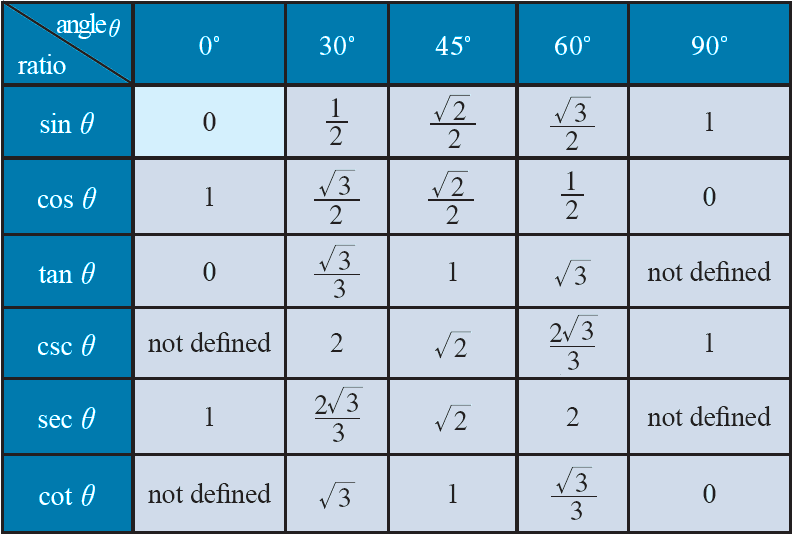TRIGONOMETRIC IDENTITIES
Subscribe to our ▶️ YouTube channel 🔴 for the latest videos, updates, and tips.
Trigonometric identities are equalities where we would have trigonometric functions and they would be true for every value of the occurring variables. Geometrically, these are identities involving certain functions of one or more angles.
SOHCAHTOA
Reciprocal Trigonometric Identities
Other Trigonometric Identities
sin2θ + cos2θ = 1
sin2θ = 1 - cos2θ
cos2θ = 1 - sin2θ
sec2θ - tan2θ = 1
sec2θ = 1 + tan2θ
tan2θ = sec2θ - 1
csc2θ - cot2θ = 1
csc2θ = 1 + cot2θ
cot2θ = csc2θ - 1
Compound Angles Identities
sin(A + B) = sinAcosB + cosAsinB
sin(A - B) = sinAcosB - cosAsinB
cos(A + B) = cosAcosB - sinAsinB
cos(A - B) = cosAcosB + sinAsinB
Double Angle Identities
Half Angle Identities
Triple Angle Identities
sin3A = 3sinA - 4sin3A
cos3A = 4cos3A - 3cosA
Sum to Product Identities
Values of Trigonometric Ratios for Standard Angles

Solving Word Problems Using Trigonometric Identities
Step 1 :
Understanding the question and drawing the appropriate diagram are the two most important things to be done in solving word problems in trigonometry.
Step 2 :
If it is possible, we have to split the given information. Because, when we split the given information in to parts, we can understand them easily.
Step 3 :
We have to draw diagram almost for all of the word problems in trigonometry. The diagram we draw for the given information must be correct. Drawing diagram for the given information will give us a clear understanding about the question.
Step 4 :
Once we understand the given information clearly and correct diagram is drawn, solving word problems in trigonometry would not be a challenging work.
Step 5 :
After having drawn the appropriate diagram based on the given information, we have to give name for each position of the diagram using English alphabets (it is clearly shown in the word problem given below). Giving name for the positions would be easier for us to identify the parts of the diagram.
Step 6 :
Now we have to use one of the three trigonometric ratios (sin, cos and tan) to find the unknown side or angle.
Once the diagram is drawn and we have translated the English Statement (information) given in the question as mathematical equation using trigonometric ratios correctly, 90% of the work will be over. The remaining 10% is just getting the answer. That is solving for the unknown.
These are the most commonly steps involved in solving word problems in trigonometry.
Subscribe to our ▶️ YouTube channel 🔴 for the latest videos, updates, and tips.
Kindly mail your feedback to v4formath@gmail.com
We always appreciate your feedback.
About Us | Contact Us | Privacy Policy
©All rights reserved. onlinemath4all.com

Recent Articles
-
10 Hard SAT Math Questions (Part - 40)
Dec 25, 25 08:30 AM
10 Hard SAT Math Questions (Part - 40) -
10 Hard SAT Math Questions (Part - 41)
Dec 24, 25 07:58 PM
10 Hard SAT Math Questions (Part - 41) -
ASTC Formula in Trigonometry
Dec 23, 25 11:34 PM
ASTC Formula in Trigonometry - Concepts - Examples and Solved Problems


